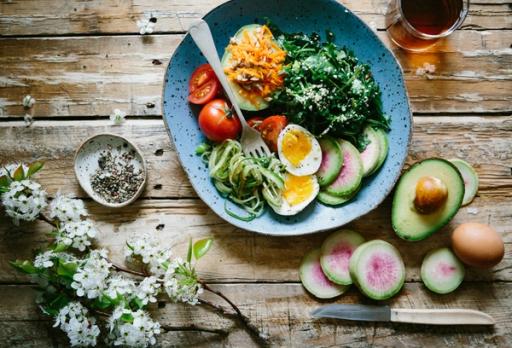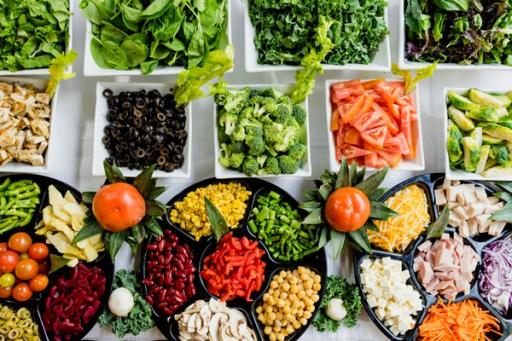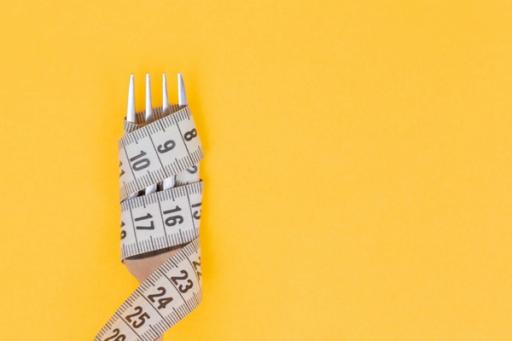
Sticking to a meal plan can help you achieve your weight loss goals, but it can also be a little boring. Eating the same foods repeatedly can lead to feelings of deprivation and make it hard to stay on track. If you want to prevent meal plan burnout, it can help to have a few different meals you can eat to stay within your calorie target. This article will discuss 500-calorie meals for weight loss, helping you determine if they are a viable option for your weight loss journey. But, how are calories measured?
Cal AI’s calorie tracker makes it easy to find delicious 500-calorie meals for weight loss to help you meet your goals. You can use the tool to discover recipes, track your calories, and get insights on your eating habits.

A 500-calorie diet is an extreme form of a very low-calorie diet (VLCD). It requires you to drastically reduce the amount of food you eat, usually to a maximum of 800 calories per day. VLCDs use meal replacements like drinks, shakes, and prepared food bars instead of meals for at least two meals a day.
VLCDs are meant for people who are very overweight and have been unable to lose weight after trying many diet plans. This diet can be dangerous and requires medical supervision. A doctor will prescribe a 500-calorie diet if he or she has decided that you must lose weight.
They do this by weighing your general health concerns against drastic calorie reduction risks and potential complications. If your doctor hasn’t recommended a 500-calorie diet, you should not try this diet. A diet like this has risks and precautions associated with it. A doctor should supervise you while on this diet.
Some people use a 500-calorie diet as part of the recently popularized 5:2 intermittent diet plan. Under this plan, you eat a balanced Mediterranean-style diet of about 2000 calories for five days of the week and then limit yourself to 500 low-carbohydrate calories per day for the other two days.
The two “fasting” days are usually nonconsecutive. Very little evidence supports the benefits of 5:2 intermittent dieting over daily calorie reduction.
You can get an idea of how much or how little 500 calories is when you consider the calorie count of popular foods. The USDA calculates that one ounce of dry-roasted peanuts (about 28 peanuts) contain about 166 calories, while a slice of pepperoni pizza contains about 261 calories.
A medium-sized apple contains about 77 calories, while two pieces of fried chicken breast contain 324 calories. Consider how many calories you burn in a day. According to the Harvard Medical School, a 185-pound person burns 94 calories by sitting in a one-hour meeting.
One of the problems with a 500-calorie diet is that it places no limits on the fats and carbohydrates you consume. A serving of chocolate pound cake and a glass of milk adds up to 500 calories. Nevertheless, that so-called meal doesn’t even come close to giving you the nutrients you need, even if you’re just sitting in a meeting.
Regardless of calorie count, a well-rounded diet includes fruits and vegetables, lean proteins, and whole grains. Being healthy is about a lot more than just a number.
Dr. Mindy Haar, Ph.D., R.D., C.D.N., of the New York Institute of Technology School of Health Professions, says, “Many people think that they can stick with a diet for the short term, lose the weight, and then go back to eating the way they were before. But if they do so, they will regain weight until they reach their original weight.”
Oftentimes, people lose both fat and lean mass but primarily regain fat, which is how diets can wind up making us fatter in the long run.
You should only conduct a 500-calorie diet under a doctor’s close supervision. Though you may lose weight, you are at risk of malnutrition, which can cause many health problems. Healthy weight loss includes:
Stick to that approach to get the pounds off and keep them off.

Eating 500–800 calories a day may put people at risk of deficiencies. Specific groups of people may be at higher risk. Older adults, in particular, may be at risk as they are more like to have reduced nutrient absorption from the small intestine.
A person may have an increased risk of gallstones while on the 500-calorie diet. Gallstones form in the gallbladder. They can block the bile duct and cause abdominal pain. The following factors increase a person’s risk of gallstones:
Previous studies found that VLCDs with a higher fat intake may help prevent the formation of gallstones. Eating foods high in fiber and reducing refined carbohydrates and sugar consumption can also help prevent gallstones.
Of the three macronutrients, fat, protein, and carbohydrates, fat is the highest in calories. Because fats contain many calories, it is difficult to eat enough of them while on a 500-calorie diet. Unsaturated fats, such as those in salmon and avocado, are highly beneficial to the body. A low-fat diet also increases the risk of deficiencies of fat-soluble vitamins, such as:
A poor variety of foods and the risk of nutritional deficiencies can make a 500-calorie diet dangerous. Before starting this diet, people need to get supervision from a doctor and a dietitian.
People sometimes use meal replacements for one or two daily meals on a low-calorie diet. Although these can be useful, consuming them for a prolonged period can harm a person’s health.
Vitamins, minerals, macronutrients, and phytochemicals all have essential interactions in the body when eating whole foods. Artificial foods cannot replace these vital interactions.
Even though a person on the 500-calorie diet eats less, the cost per pound of food is higher than on other diets. The cost of meal replacement foods, such as Optifast, is often much more than the equivalent amount of whole foods. Most programs also suggest weekly consultations with the supervising doctor.
Anyone trying a VLCD should implement other healthy weight loss strategies as well. These may include nutrition counseling and physical activity. Being on a VLCD does not establish good health behaviors, as the diet is not sustainable over time. Making small but lasting changes that are easier to maintain is a much better idea.
Other low-calorie diets include:
These diets provide opportunities for consuming higher quantities of vegetables, fruit, whole grains, and healthful fats. On the 5:2 diet, a person eats a regular amount of healthful calories on 5 days of the week, then limits their calorie intake to 500–600 calories for 2 non-consecutive days.
Time-restricted feeding extends the nighttime fast to between 12 and 16 hours. This means that a person can only eat during certain hours of the day. For example, they may fast at night and only eat between 9 AM and 7 PM. When people do ADF, they alternate their daily calorie intake, eating 500 calories one day and consuming a regular number of healthful calories the next.
A recent meta-analysis and systematic review found that people using ADF achieved slightly higher fat loss than those using VLCD. They also seemed to have a lower risk of muscle loss. ADF or the 5:2 diet can help a person achieve the same weight loss or health benefits as using a 500-calorie diet while also being much easier to follow.
Losing weight quickly could put a person at risk of losing muscle instead of fat. A decrease in muscle mass can negatively impact a person’s metabolism. This is an undesirable effect as it reduces a person’s ability to burn calories and prevent injury. Building lean muscle while eating a healthful diet is often a better approach to sustainable weight loss.
Eating out can be difficult on a 500-calorie diet. Many restaurants do not reveal the total calorie count of their meals. Being on the 500-calorie diet may also cause anxiety about ordering food or eating with family and friends.
Doctors do not recommend VLCD and meal replacement products for people who are overweight or obese with certain medical conditions. People with the following conditions should not try the 500-calorie diet without a doctor’s approval and supervision:
The long-term effects of a VLCD on bone health are unknown because people do not use the diet for prolonged periods. A lack of essential minerals and nutrients can weaken bones over time.

When you have a goal of eating only 500 calories a day, your first thought may be about what you will have to give up. So, instead of focusing on what you will lose, look at the nutritional foods you can eat to get you through your low-calorie days.
Non-starchy vegetables that are low in calories and loaded with nutrition include:
These will make you lose weight without putting your health in danger. On the other hand, salads, sautéed, stir-fried, and blanched food minimize the disruption of valuable enzymes and phytonutrients. At the same time, full-fat versions are more nutritious and will help keep hunger at bay. Fruits and freshly pressed fruit juices.
Ensure you don’t consume:
The foods listed below are unhealthy and have a high-calorie count. So most diets, including high-caloric ones such as the 1300 calorie diet plan, avoid them altogether.
Tip: If you feel hungry before lunch, you can drink a cup of green tea without sugar.
Tip: Drink a glass of lukewarm water 20 minutes before lunch to avoid overeating.
Note: If you follow a 500-calorie diet for a month, the results can vary depending on your starting weight and activity levels.
On average, consuming 500 calories a day could lead to a significant reduction in body weight. Nevertheless, this is a very low-calorie plan and should only be followed briefly and under medical supervision. For those wondering, “how much weight can you lose eating 500 calories a day,” let us clarify that it’s possible to lose up to 10-15 pounds monthly. However, this is not advisable long-term, as such a restrictive diet may lead to nutritional deficiencies. Aim for long-term, sustainable weight loss through healthy eating habits and regular exercise.
Cal AI transforms calorie tracking with cutting-edge AI technology. Just snap a photo of your meal, and we'll do the rest.
Our app combines your phone's depth sensor with advanced AI models to:
With 90% accuracy on visible foods and multiple tracking options like:
We've made nutrition tracking effortless. Whether you're scanning a full meal or a quick snack, Cal AI
Our AI learns from your feedback to improve accuracy. It includes personalized insights and smart reminders to keep you on track. Cal AI makes achieving your fitness goals simpler than ever.
Track your calories with your camera using Cal AI's calorie tracker today!